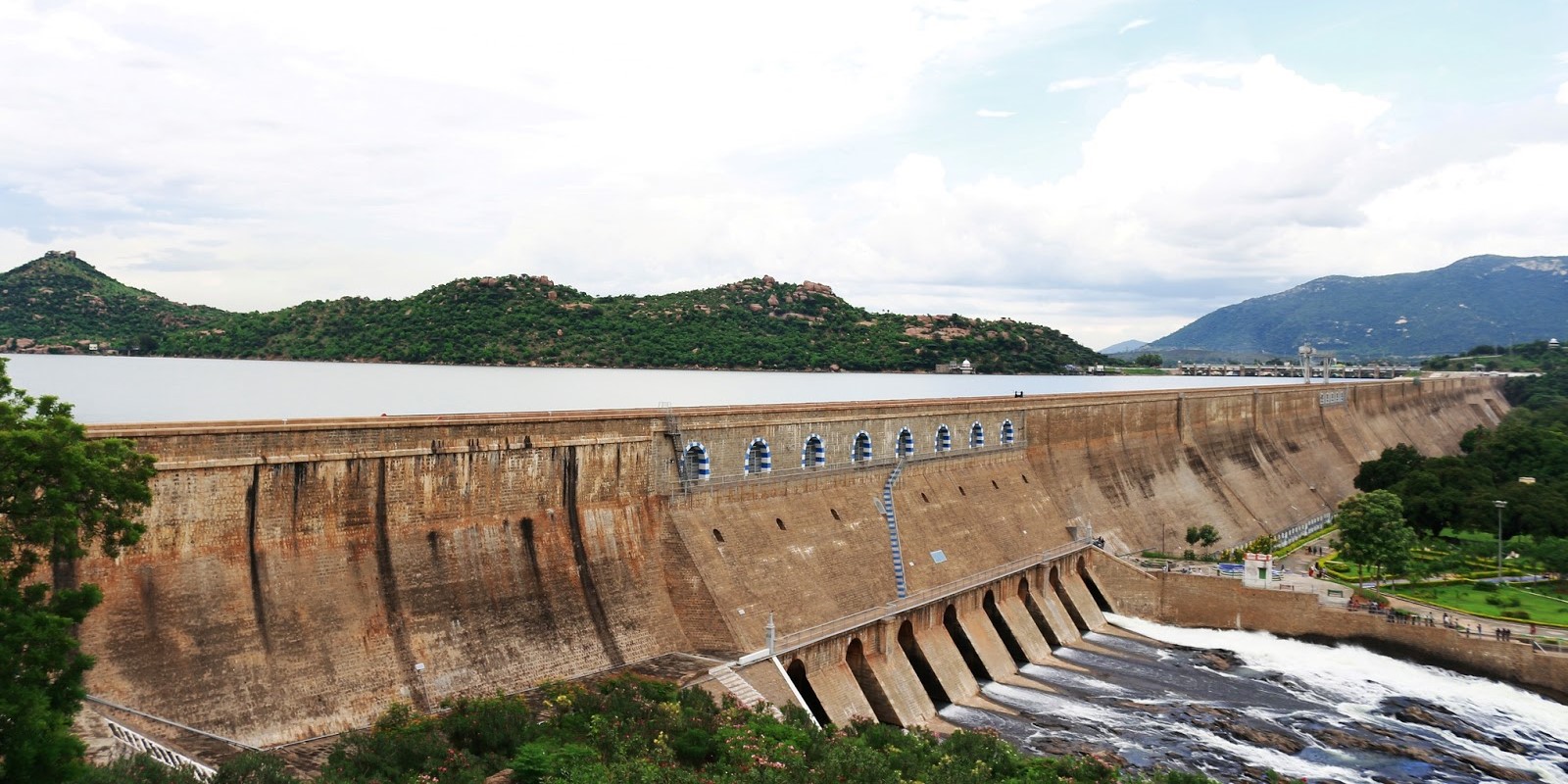TN water resources minister said the decision was taken amidst the travails of farmers in the delta districts in saving standing paddy crops.
Published Oct 13, 2023 | 3:35 PM ⚊ Updated Oct 13, 2023 | 3:35 PM

File photo of Mettur Dam in Tamil Nadu which is currently almost dry. (Official Website)
The Tamil Nadu government has said it would “strongly fight” for the release of 14,000 cusecs of Cauvery river water by Karnataka, whose government has been repeatedly opposing the ove, contending a drought situation prevails in the state.
Tamil Nadu Water Resources Minister Durai Murugan said on Friday, 13 October, that the decision was taken amidst the travails of farmers in the delta districts in saving standing paddy crops.
Farmers dependent on the water from the Mettur dam have taken up Kuruvai crop (short-term) cultivation in the delta districts, and in certain pockets in Thanjavur district, anticipating steady discharge of Cauvery water from neighbouring Karnataka, many have taken up the Samba (long-duration) paddy crop.
However, their hopes of realising a good yield appear bleak, owing to the water level in the Mettur reservoir nearing dead storage.
Besides agriculture, the dam caters to the drinking water requirement in the districts.
Tamil Nadu will present its case in Friday’s meeting of the Cauvery Water Management Authority (CWMA) and strongly contend for the release of 14,000 cusecs of water to save the standing crops in the delta districts, Murugan told reporters.
On Wednesday the Cauvery Water Regulation Committee ordered Karnataka to release 3,000 cusecs water to Tamil Nadu from 16 to 31 October, he said.
Replying to a question, the minister ruled out any scope for releasing water from the Mettur dam.
“There is hardly 10 tmc water in the reservoir. So, we can’t release water. Though the catchment areas are receiving rain we have to wait and see if the situation improves,” he added.
The sudden rain in the catchment areas of Thoppaiyaru and Palar only led to a meagre rise in the water level of the Mettur dam.
Though the inflows increased to 18,974 cusecs on Thursday evening from 2,528 cusecs on the previous day, the inflows, however, decreased to about 12,606 cusecs on Friday, a Public Works Department official said.
According to the secretary of the Federation of Tamil Nadu All Farmers Association C Nallasamy, the water level in the dam decreased to 32 feet for the first time in the last seven years due to the failure of the southwest monsoon.
He claimed that if the current situation continued there would be a crisis not only for agriculture but also drinking water in the districts dependent on Cauvery.
Despite Karnataka arguing in Wednesday’s CWRC meeting in Delhi that it could not release water to Tamil Nadu due to severe distress and lack of water in reservoirs in the Cauvery river basin, the CWRC directed it to ensure 3,000 cusecs of water every day to the neighbouring state from 16 October.
It may be noted that the Siddaramaiah-led-Karnataka government had said that it would file a petition challenging the previous orders of the CWRC and Cauvery Water Management Authority (CWMA) before the Supreme Court. However, the government has yet to file a petition.
In the midst of distress and opposition from farmers and elected members, the Karnataka government released around 46.1 tmcft of water at Biligundlu from 1 June to 3 October.
As the CWRC ordered Karnataka yet again to release water to Tamil Nadu, the Opposition leaders in the former blamed the Siddaramaiah government and called it a “failure of governance”.
Responding to the CWRC order, Karnataka Deputy Chief Minister DK Shivakumar, who also holds the water resources portfolio, asserted that the state government was committed to protecting the interests of farmers of the state.
Shivakumar told reporters in Mysuru on Wednesday: “For the last two-three days, around 8,000-10,000 cusecs of water has been flowing into our reservoirs, We have worked towards protecting the interests of our farmers.”
He added: “Even though we release less water from the dams, the amount of water flowing into Biligundlu has been compensated by the rains around Bengaluru. We have tried to inform the committee about the ground situation in our state. Whatever order comes, we will protect the interests of our farmers.”
On CWRC and CWMA members not visiting the Cauvery basin in Karnataka despite appeals being made to them, he said: “We have submitted a request in this regard. The final decision should be taken by them. We cannot speak publicly on this issue.”
He also pointed out: “The drought situation in the state has affected power generation. The amount of power generated by water has gone down. The government will take necessary steps to compensate for this.”
Several farmer associations, including Karnataka Jala Hitarakshana Samiti (KJHS) and the State Farmers’ Associations’ Union, have condemned the CWRC order.
KJHS members, led by Karnataka State Sugarcane Growers Association president Kurbur Shanthakumar, had met Union Minister for Jal Shakti Gajendra Singh Shekhawat and demanded that the Union government must intervene in the matter.
They also apprised Shekhawat of their concerns, including the drought situation, in the Cauvery basin in Karnataka.
